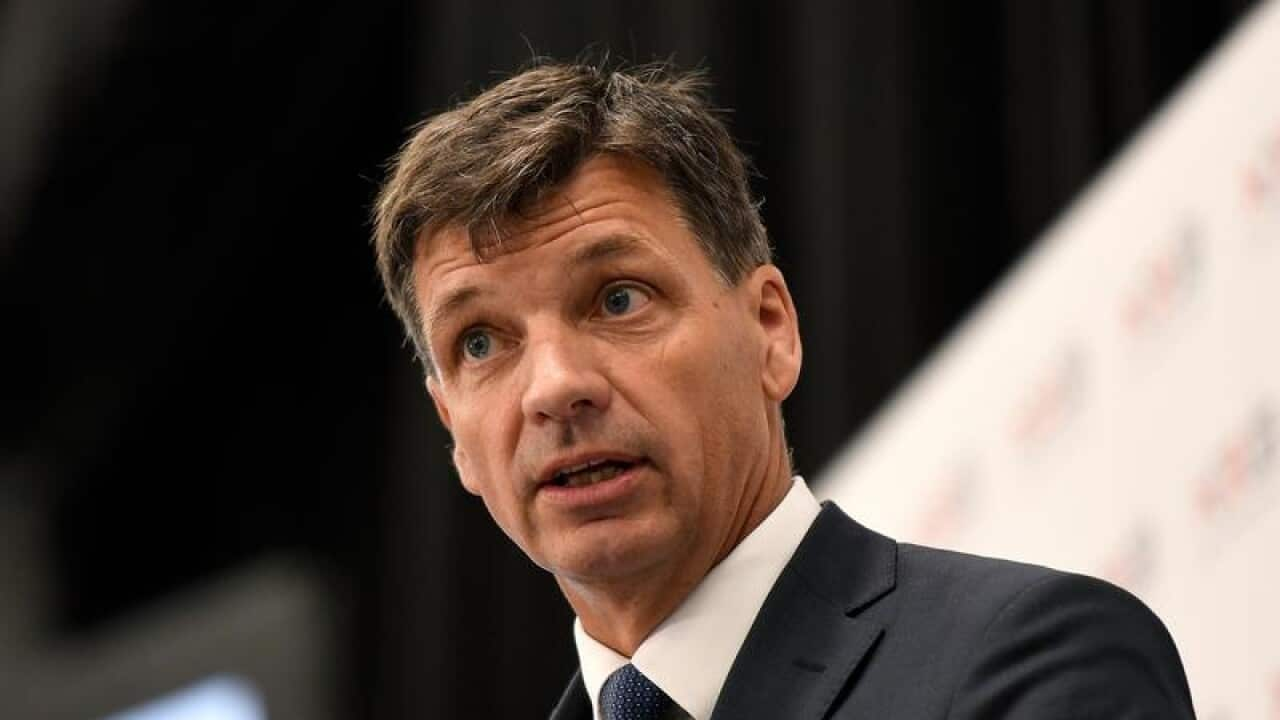Australia will take a long-term emissions reduction strategy to a global summit on climate change later this year.
The plan will mark a shift away from investment in renewable energy sources such as wind and solar, and instead focus on hydrogen and carbon capture technology, according to Energy Minister Angus Taylor.
The cornerstone of the strategy will be a "technology investment roadmap" which will give the public and private sector guidance on the government's priorities for energy and emissions-reduction technologies.
To date, federal funds totalling more than $10.4 billion have been invested in more than 670 clean technology projects with a value of $35 billion, mostly focussed on wind and solar. "We must move our investments to the next challenges - hydrogen, carbon capture and storage, lithium, and advanced livestock feed supplements, to name a few."
"We must move our investments to the next challenges - hydrogen, carbon capture and storage, lithium, and advanced livestock feed supplements, to name a few."

A supplied photoshowing an aerial view of the Darling Downs solar farm near Dalby, Queensland. Source: APA
Carbon capture is controversial as the technology focusses on the reduction of carbon pollution from fossil fuels, with advanced carbon capture technology potentially paving the way for new lower emitting coal-fired power plants.
Advocates of a new coal-fired power station at Collinsville in North Queensland have previously argued advanced carbon capture technology could make the proposed station commercially viable - as well as environmentally responsible.
Labor climate and energy spokesman Mark Butler said the plan lacked credibility, especially given the latest data showed only a 0.3 per cent emissions reduction in the year-to-date.
Mr Butler added that Bloomberg New Energy Finance had estimated the cost of a carbon-capturing coal-fired power station at around $352 per megawatt-hour, compared with a $70/Mwh figure for Snowy Hydro.
"Angus Taylor's carbon capture and storage pipe dream will mean higher power prices," Mr Butler said.
Greens leader Adam Bandt also slammed Mr Taylor's proposed investment in carbon capture technology.
“The only energy sources in Australia that have cut pollution are wind and solar. Now is the time to be backing them in and supporting investment, not cutting support," he said.
“CCS (Carbon Capture and Storage) won’t save coal and it won’t save people from the climate crisis. For over a decade this has been hailed as the miracle cure, but it’s just snake oil,".
Environmental groups and Labor say the government's new emissions plan merely kicks the can down the road on climate action. Flagging his approach to the Glasgow COP26 summit, Mr Taylor on Friday told a Sydney business forum that the strategy will be based on using technology to cut emissions.
Flagging his approach to the Glasgow COP26 summit, Mr Taylor on Friday told a Sydney business forum that the strategy will be based on using technology to cut emissions.

Bushfire survivors use burnt debris from the recent bushfires to create a symbolic trail of destruction outside Parliament House in Canberra, Feb. 11, 2020. Source: AAP
"A target without a plan is meaningless - it is the worst part of the emissions reduction debate," he told the Committee for the Economic Development of Australia.
"The world must go through a rapid technology development and adoption phase to ensure that we can reduce emissions on a global scale, and Australia is well placed to take advantage of this."
The government has a target of a 26 per cent reduction in emissions on 2005 levels by 2030, but Labor says a longer-term target of zero net emissions by 2050 is also needed.
Leading up to this year's climate summit, work will be done on how best to boost investment in low-emissions energy generation, and make geological and biological sequestration cheaper.
Mr Taylor says one of his parameters will be to deliver the shift over the coming decades "without massive government subsidies."
The government would target its support to ensure each technology reached economic parity or better, that is, the shift to lower emissions comes at a low or zero cost.
In addition, the government would seek a "four or five times multiplier" effect - for every dollar from taxpayers, the private sector would invest four or five dollars over the course of a project.
Dr Nikola Casule, head of research at Greenpeace Australia Pacific, said the key to cutting emissions lay in phasing out coal, oil and gas.
"Images of koalas burned alive are still so fresh in our minds, yet the federal government just keeps kicking the climate can down the road with another tactic to ignore coal as Australia's top source of emissions," Dr Casule said.



